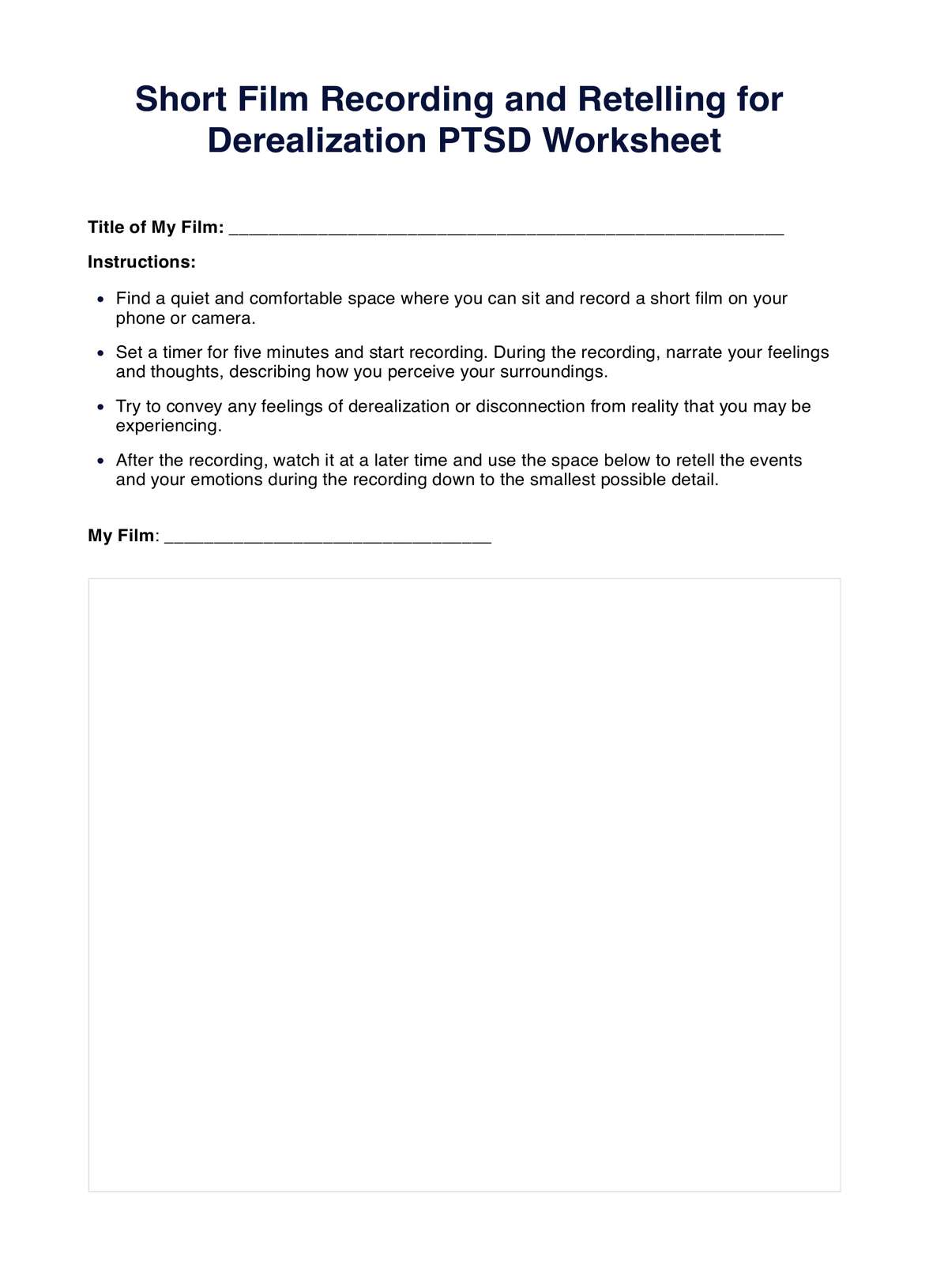Completing the worksheet typically takes around 5 minutes for recording and additional time for reflection, making it a relatively short but impactful exercise.

Short Film Recording and Retelling for Derealization PTSD Worksheet
Gain self-awareness, identify triggers, and develop coping strategies with the Short Film Recording and Retelling for Derealization PTSD Worksheet.
Use Template
Short Film Recording and Retelling for Derealization PTSD Worksheet Template
Commonly asked questions
This worksheet helps individuals by providing a structured way to express and reflect upon their derealization experiences, fostering self-awareness and aiding in developing coping strategies.
It is best used during moments when derealization is experienced or as part of therapy sessions. Using it when symptoms are prevalent allows for a more accurate reflection.
EHR and practice management software
Get started for free
*No credit card required
Free
$0/usd
Unlimited clients
Telehealth
1GB of storage
Client portal text
Automated billing and online payments











